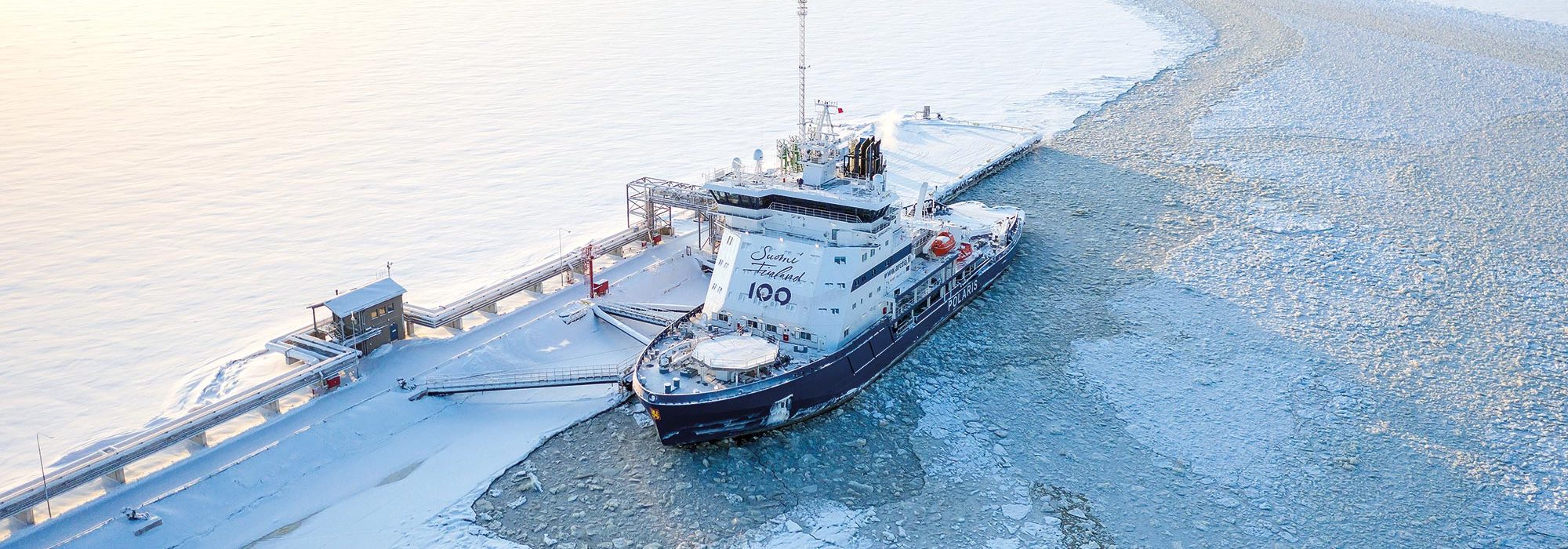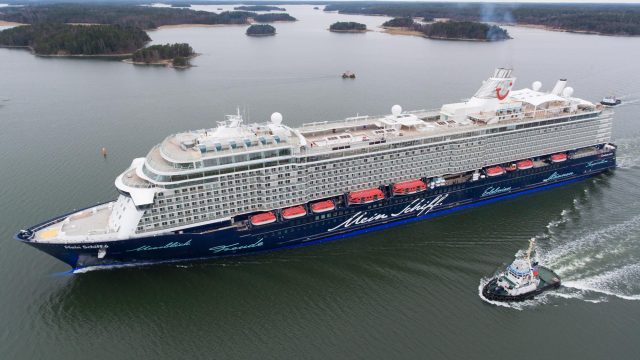The shipyard is completing an arctic tanker project for Greek owners. The vessel is a condensate carrier with a high ice class (Arc7), representing a new generation of Arctic tankers capable of operating in the extremely cold-weather conditions and shallow waters of the river estuaries along the Siberian coast. Sea trials are expected to take place in April.
Arctech has delivered various ice-class vessels to Russian owners. According to Markku Kajosaari, SVP Sales, demand for such vessels is, unfortunately, limited today. The shipyard is looking for new-build projects in which Arctech could use all the special capabilities of the Helsinki shipyard.
“We have had several enquiries about small to medium-size cruise vessels intended for operations in remote areas and harsh conditions. These types of projects could be very suitable for us. There are also several projects for real icebreakers and other vessels with heavy ice classes, and Arctech is naturally interested in these,” Kajosaari says.
There are several projects for real icebreakers and other vessels with heavy ice classes, and Arctech is naturally interested in these.
Russia needs to replace its older generation of nuclear icebreakers with newer vessels. According to the shipyard’s information, as many as four new LNG-powered Arctic breakers may be ordered for delivery to Russia. However, the commissioner of these vessels will have the final say over which shipyard gets to build the icebreakers.
“If the ships are ordered by a Russian state-owned operator, they will be built by a Russian shipyard,” Kajosaari said. “In this case, Arctech could only be involved as a subcontractor, as was the case in the icebreaker Murmansk, where the main contractor was the Russian yard in Vyborg.
“But if the commissioner or the operator is a Russian private company, Arctech has a chance of winning the contract. However, even in this case, there will be very tough competition, as we have seen many times before. There are several advanced Russian shipbuilders nowadays,” says Kajosaari, playing down speculation of possible new icebreaker orders in Helsinki.
At the same time, there is strong demand for high ice-class cargo ships in the High Arctic but, unfortunately, some of these new vessels are so enormous that the facilities in Helsinki are not large enough.
“We have built one cargo vessel for year-round operations in the Northern Sea Route. This vessel is the first tanker ever built at the Helsinki shipyard. There is increasing demand for high-ice-class cargo vessels operating in Arctic areas, but many of these vessels are too big to be built in Helsinki. Furthermore, demand for smaller Arctic cargo vessels, like the condensate carrier currently under construction at Arctech, is more occasional.”
The current owner of Arctech Helsinki Shipyard Inc is the Russian company United Shipbuilding Corporation (OSK). Until recently, the role of OSK in providing access to Russian markets and co-operation with shipping companies operating in Russian waters has been essential for receiving orders.
However, according to Kajosaari, the sanctions imposed by US authorities have presented a challenge for Arctech’s operations.
“Our parent company has been on the US sanctions lists for some time now. This has also affected areas such as Arctech’s payment procedures and financing possibilities. It is important to note that neither OSK nor Arctech are affected by the trade policy measures imposed by the EU or the Finnish government,” Kajosaari points out.
The shipyard has been working on an expedition cruise ship project with a Japanese shipping company, but the schedule and details of the project are still unconfirmed.
“Arctech has been in discussions about a technically advanced and environmentally friendly cruise ship project with a Japanese shipping company. We hope the discussions will lead to favorable results in the future.”
As the expedition cruise ship market is developing rapidly, Kajosaari believes there will be room for innovative ship concepts and additional new builds.
“However, as the average size of the vessels is rather small, the volume of new capacity is still reasonable,” he said. “A great deal of the new capacity is needed to replace ageing tonnage.”
Kajosaari said he thinks that developments in regulatory criteria and increases in the number of experienced and environmentally aware customers will create pressure to launch Polar Code-compliant vessels with modern environmentally friendly solutions.










